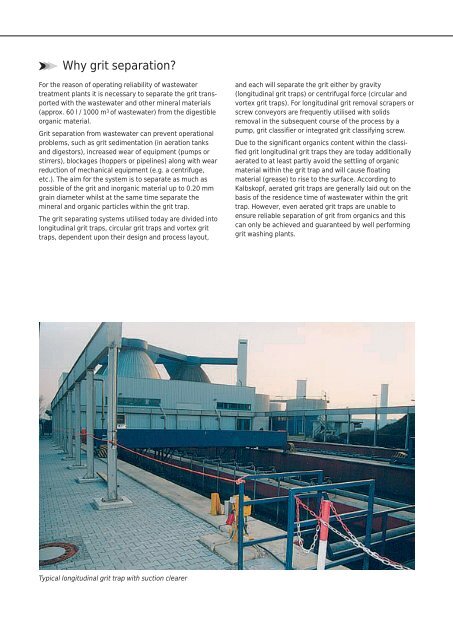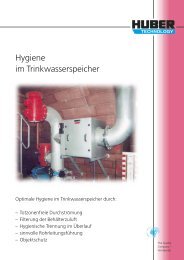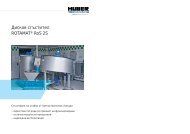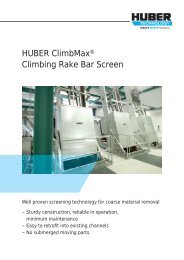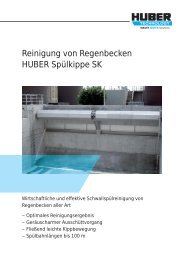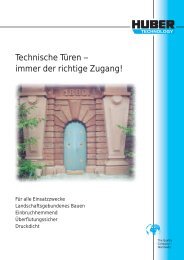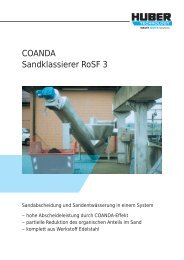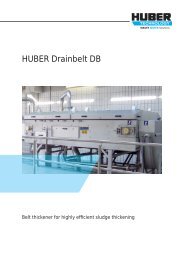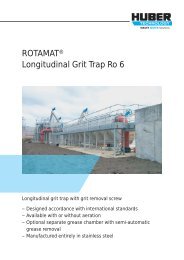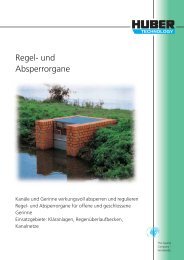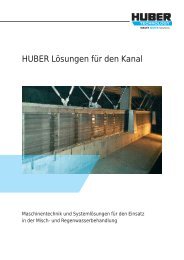HUBER Grit Separation Systems
HUBER Grit Separation Systems
HUBER Grit Separation Systems
You also want an ePaper? Increase the reach of your titles
YUMPU automatically turns print PDFs into web optimized ePapers that Google loves.
➤ Why grit separation?<br />
For the reason of operating reliability of wastewater<br />
treatment plants it is necessary to separate the grit transported<br />
with the wastewater and other mineral materials<br />
(approx. 60 l / 1000 m 3 of wastewater) from the digestible<br />
organic material.<br />
<strong>Grit</strong> separation from wastewater can prevent operational<br />
problems, such as grit sedimentation (in aeration tanks<br />
and digestors), increased wear of equipment (pumps or<br />
stirrers), blockages (hoppers or pipelines) along with wear<br />
reduction of mechanical equipment (e.g. a centrifuge,<br />
etc.). The aim for the system is to separate as much as<br />
possible of the grit and inorganic material up to 0.20 mm<br />
grain diameter whilst at the same time separate the<br />
mineral and organic particles within the grit trap.<br />
The grit separating systems utilised today are divided into<br />
longitudinal grit traps, circular grit traps and vortex grit<br />
traps, dependent upon their design and process layout,<br />
and each will separate the grit either by gravity<br />
(longitudinal grit traps) or centrifugal force (circular and<br />
vortex grit traps). For longitudinal grit removal scrapers or<br />
screw conveyors are frequently utilised with solids<br />
removal in the subsequent course of the process by a<br />
pump, grit classifier or integrated grit classifying screw.<br />
Due to the significant organics content within the classified<br />
grit longitudinal grit traps they are today additionally<br />
aerated to at least partly avoid the settling of organic<br />
material within the grit trap and will cause floating<br />
material (grease) to rise to the surface. According to<br />
Kalbskopf, aerated grit traps are generally laid out on the<br />
basis of the residence time of wastewater within the grit<br />
trap. However, even aerated grit traps are unable to<br />
ensure reliable separation of grit from organics and this<br />
can only be achieved and guaranteed by well performing<br />
grit washing plants.<br />
Typical longitudinal grit trap with suction clearer


